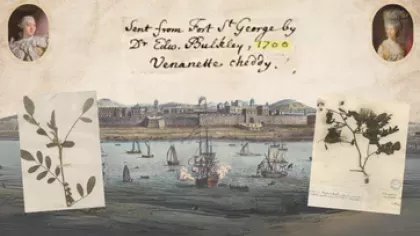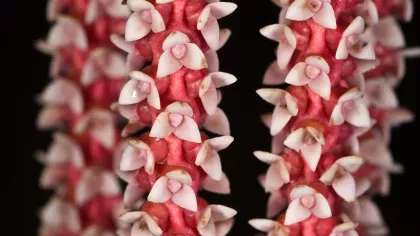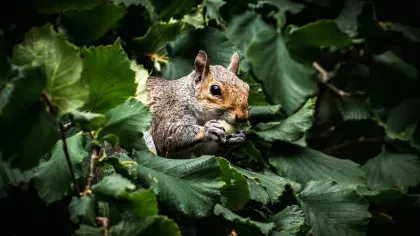10 October 2023
State of the World’s Plants and Fungi 2023: What we know, what we don’t, and how we find out
Millions of fungi, thousands of new species and one call to protect our planets biodiversity.

Kew’s State of the World’s Plants and Fungi 2023 has arrived, shedding light on our current understanding of plants and fungi, and what we need to find out in order to protect them.
Kew’s fifth State of the World’s report draws on the expertise of 200 scientists in over 100 institutions from 30 different countries to gain a global understanding of biodiversity and tackle the nature emergency we find ourselves in.
What we know
To protect the world’s plants and fungi, we first need to understand what’s out there that needs protecting.
Over three decades ago, Rafaël Govaerts began a project to catalogue all the plants in the world. In 2021, he finished compiling the first complete version of the list, the World Checklist of Vascular Plants (WCVP), which brings together all the confirmed species of flowering plants, conifers, cycads, ferns and others.
The WCVP, and similar projects like the Leipzig Catalogue of Vascular Plants and World Flora Online, help us to understand what plants are out in the world – they underpin so much of our study of biodiversity.
The minds behind the different plant lists have already spoken about how they can better work together in the future, to give us an even more comprehensive understanding of the plants on our planet.

Finding fungi
But plants are only half the picture. We can’t forget about our fungal friends. Even though they are just as crucial to our ecosystems as plants, we understand far less about them, and only 155,000 have been formally named to science.
Until now, estimates on the total number of fungal species have varied widely. But now scientists have come up with the most accurate estimate to date, by looking at information such as the ratio of plants to fungi in different areas of the world, as well as exploring DNA data taken from soil samples.
The new estimate says the world is home to 2.5 million species of fungi, meaning we have barely scratched the surface. We currently name around 2,500 species a year, meaning it would take nearly a millennium to describe them all! The researchers have suggested using DNA databases to transform the way we identify new species.

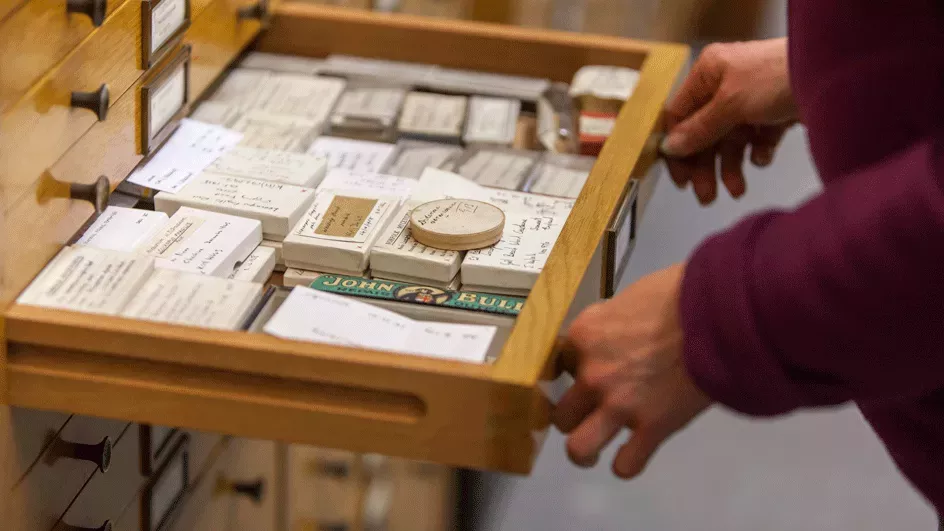
Learning what’s out there
Since the start of 2020, over 8,600 species of plant and over 10,200 species of fungi have been newly named to science. Some of these plants are actually already extinct, like the orchid of the falls Saxicolella deniseae, whose environment was devasted by dam construction.
But we’re also discovering new species closer to home. A new species of giant waterlily, Victoria boliviana, had been hiding in Kew’s Herbarium for over 100 years and was only recognised as a distinct species in 2022.
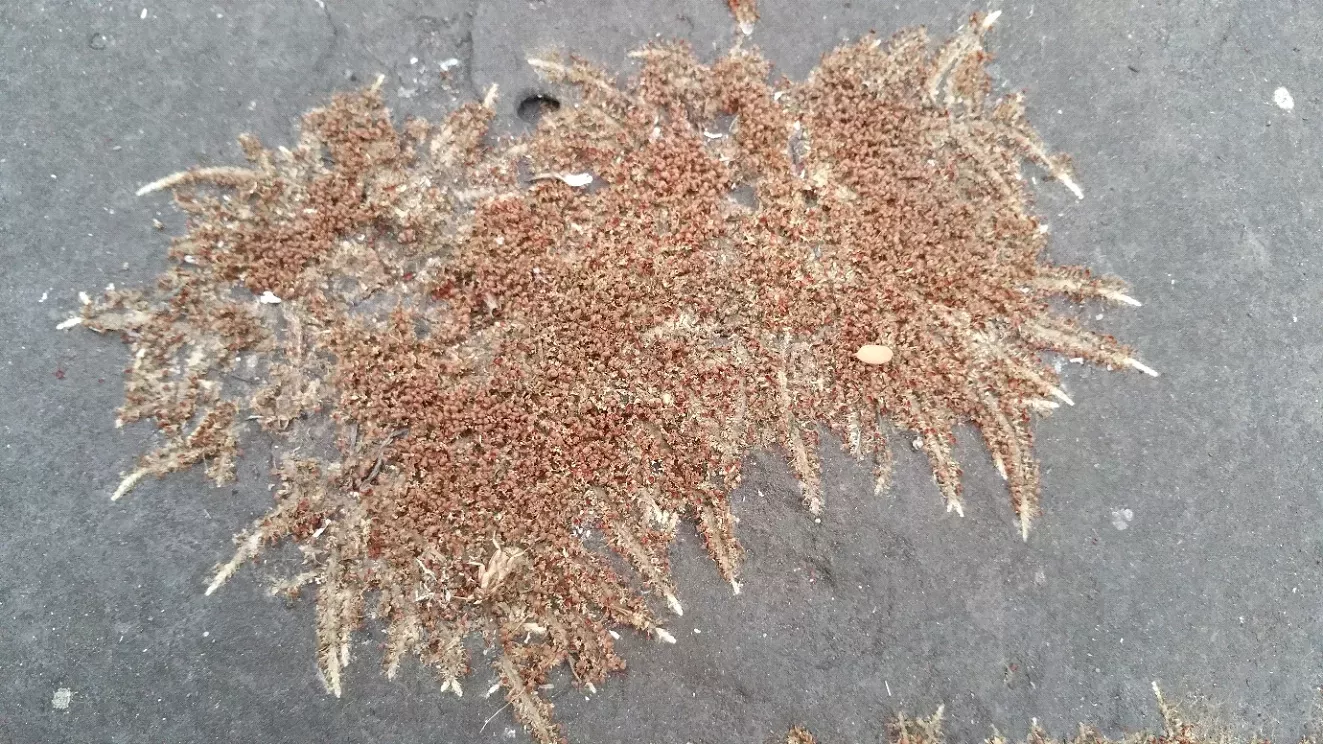

Calculating the risk
In one of the report’s most shocking stats, it is revealed that 45% of flowering plant species are estimated to be at risk of extinction.
But perhaps even more alarming, it’s believed that three out of every four unknown plant species are predicted to be under threat, based on a model that used data for plants with known conservation status to predict extinction risk for unassessed species.
The findings indicated that epiphytes – plants that grow on other plants, like bromeliads and orchids – were the most threatened plant life forms. They also found that plants only found in one country and nowhere else in the world, known as country endemics, are more likely to be at risk of extinction.
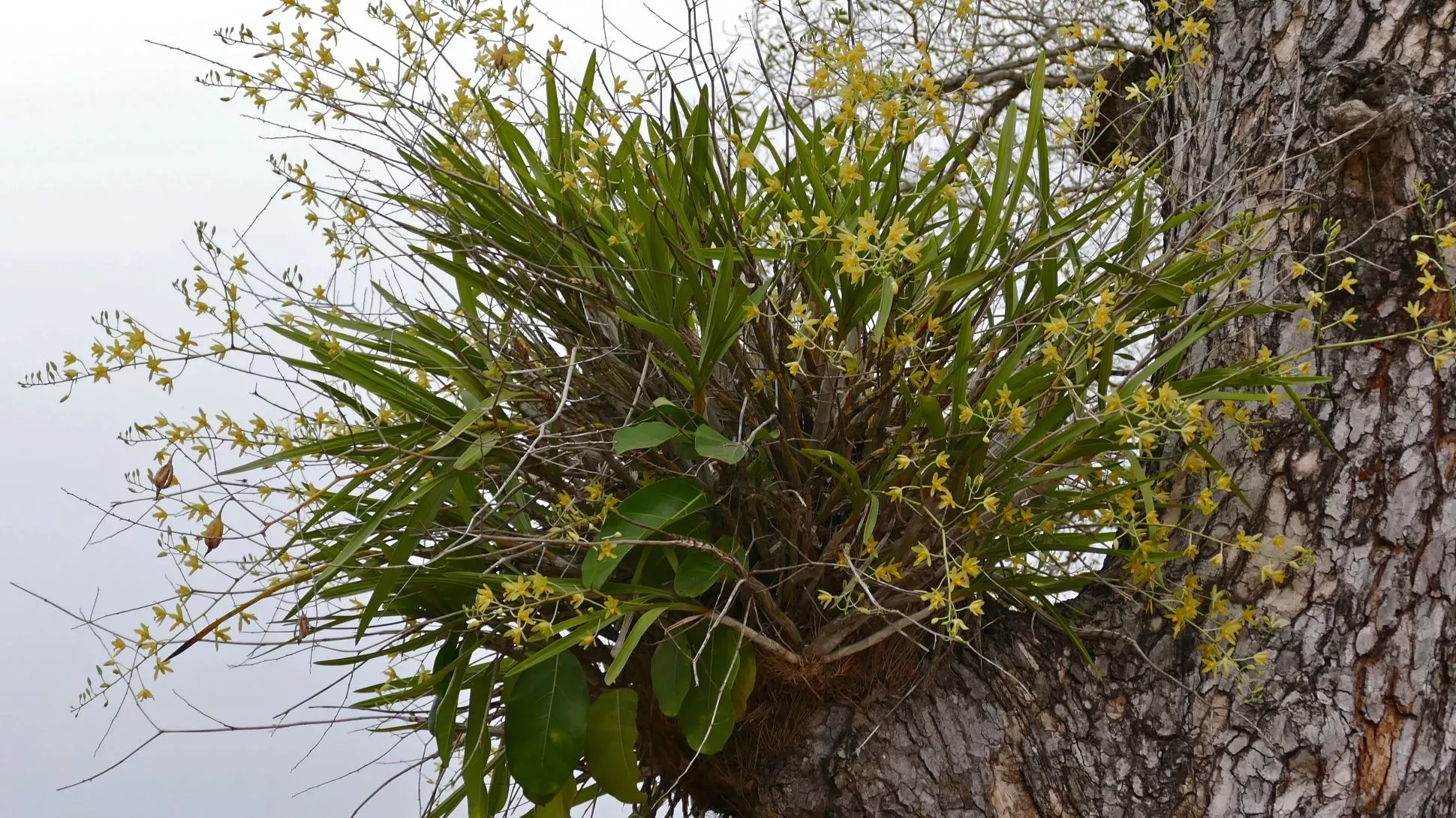
In light of this knowledge, scientists at Kew are calling for all newly described plant species to be presumed threatened with extinction until proven otherwise.
Not to forget about fungi, only 0.4% of known fungi species have been assessed for their IUCN Red List conservation status, which makes only 0.02% of all predicted 2.5 million species.
Of what we do know, fungi are currently threated by both land use and climate change. In the report, scientists indicate we must preserve fungi both in their natural habitat, as well as in collections, to give them the best chance at survival.
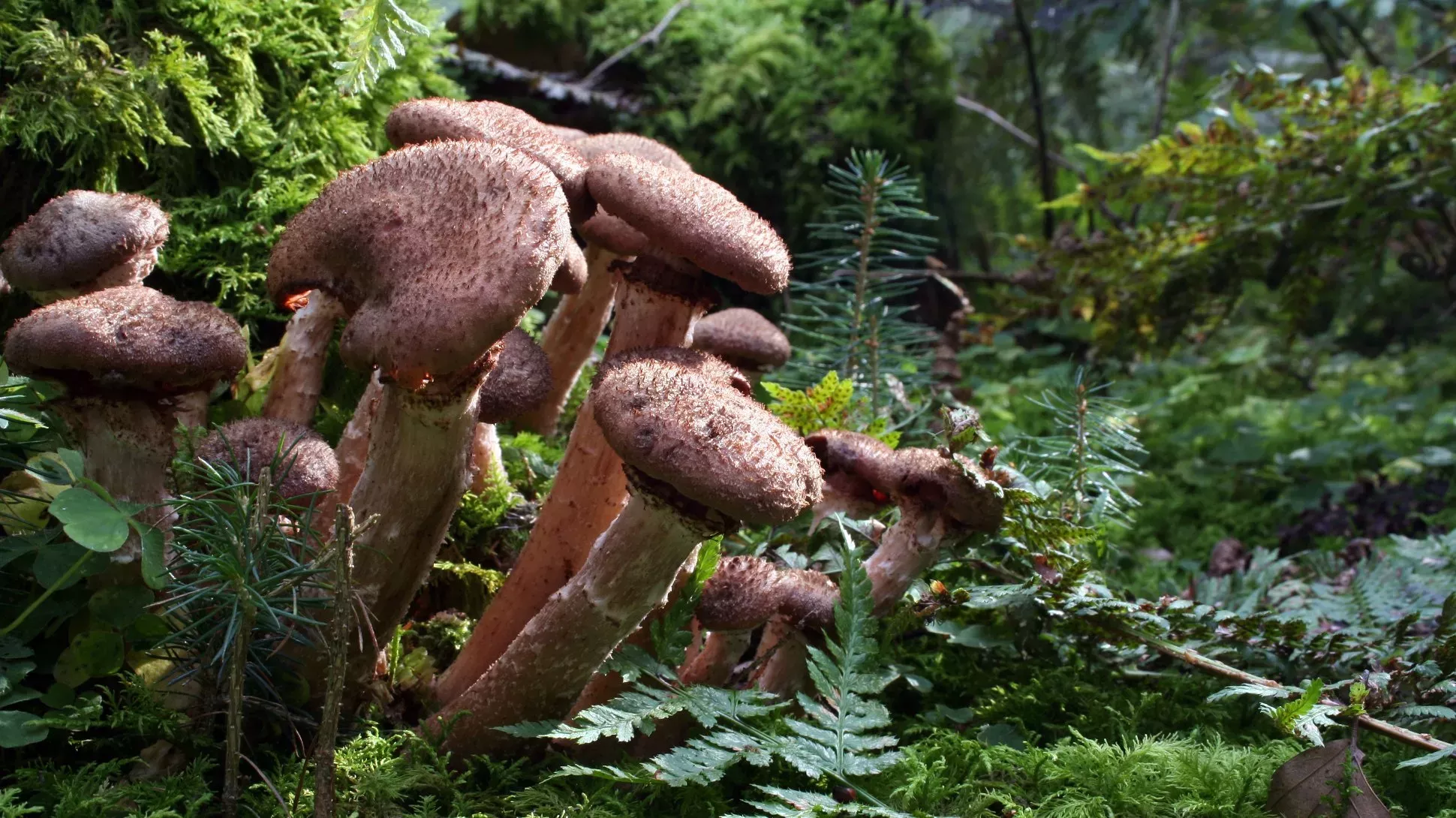
Finding out the ‘what’ and ‘where’
When we aim to protect our natural biodiversity, there’s an instinct to focus on the areas that have the biggest range of different species, also known as high species richness. But this might not be a perfect strategy.
Recent research suggests that it might be more beneficial to an ecosystem to preserve more genetically distant lines, rather than a high number of very similar species. By focussing on protecting a wider variety of unrelated species, it gives an ecosystem more versatility to adapt to climate change, and other environmental shifts.
But before we can consider this and protect these species, we have to know where we need to look. In the report, scientists reveal they have identified 32 plant darkspots across the world, where we know least about the identities and geographical distributions of native plant species. Using continents and countries defined by a standard system used for plant distributions, they identified these darkspots:
Plant darkspots around the world
- Asia-Tropical: Myanmar, Assam, Philippines, Vietnam, Bangladesh, New Guinea, India, East and West Himalaya, Thailand, Sumatra, Laos, Malaya and Borneo
- South America: Colombia, Peru, Venezuela, Bolivia, Brazil North, Brazil Southeast, Ecuador, Costa Rica and Panama
- Asia-Temperate: China South-Central, Turkey, Iran, Uzbekistan, China Southeast and Tadzhikistan.
- Africa: Madagascar and Cape Provinces
- North America: Mexico Southwest
All but one of these darkspots overlap with the existing 36 biodiversity hotspots, so this analysis will further help develop strategies in these areas that describe and conserve the species found there.

What’s next?
The State of the World’s Plants and Fungi 2023 report has some stark messages.
Plant and fungal species that scientists don’t even know exist are at risk of disappearing. There are regions of our planet that are complete botanical mysteries. And the rate at which we are uncovering these mysteries is perhaps too slow to make a difference.
But it’s also a message of hope. By highlighting what we don’t know, it gives us better targets to work towards. By collaborating more effectively with scientists across the globe, we can aim for shared targets, and learn what, where and how we need to take action to protect our planet’s fragile biodiversity.
State of the World's Plants and Fungi 2023
Read the whole 2023 report, and discover more of the groundbreaking work scientists from all around the world have done to understand the threats facing biodiversity.



